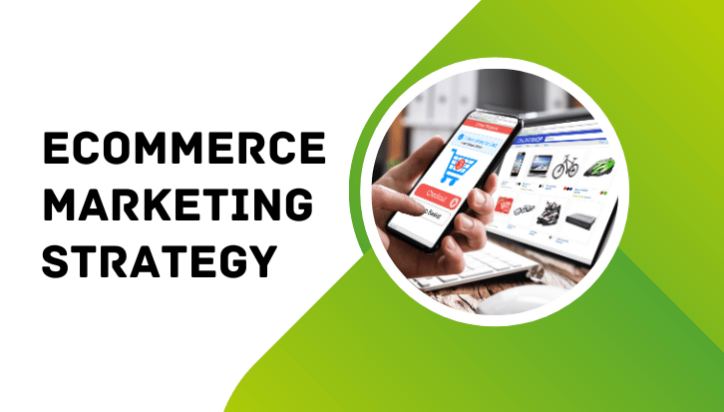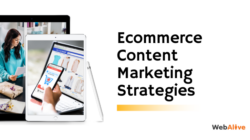
Ecommerce Marketing: 15 Strategies & Tips to Drive Sales
Ecommerce marketing is always a win-win scenario.
For any ecommerce organisation, getting their marketing right is the key to competing against well-established ecommerce giants.
The rapid advancement in technology has compelled businesses to keep up with the momentum. And it is the most current ecommerce marketing trends and techniques that can skyrocket your ecommerce business’s growth driving more and more sales.
What’s Ecommerce marketing?
Ecommerce marketing encompasses different sorts of marketing activities of driving awareness and action to create a strong presence for your online products or services and generate sales. With the rise of online shopping, ecommerce marketing has seen tremendous growth in importance.
Simply, if done right, it does the following,
- Stimulates more orders
- Drive more traffic to your online store
- Acquire new customers from website visits
- Make the post-purchase experience better
- Improve customer satisfaction and drive loyalty
- Increase brand awareness
15 strategies and tips to help you with ecommerce marketing
Ecommerce marketing is a dynamic process. Hence to remain at the forefront of the industry, it is imperative to evaluate marketing strategies regularly. Start by testing out the following proven strategies that will improve your chances of generating more online sales if used effectively.
1. Social media advertising

Take advantage of social media channels for your ecommerce marketing. Facebook, Instagram, LinkedIn, Pinterest, and YouTube use any of the top social networking sites to engage with the right people. Also, try to promote your products on social media by introducing different types of campaigns.
For example, you can run influencer campaigns by collaborating with social media influencers to promote your products. Or you can run promotions by arranging competitions or giveaways where customers can join to win prizes or receive free products.
2. Invest in SEO
Ecommerce SEO refers to the search engine optimisation of your online store. It is one of the most tried strategies for getting discovered online. The goal is to make your ecommerce website at the top of search results when users input a search relevant to your products or services.
Keyword optimisation, content marketing, local business listing, and guest posting, there are a bunch of key elements of a successful SEO strategy. So, from producing blogs or other content on your site with high-ranking keywords to optimising images for searches to going after authoritative backlinks, try to implement the best SEO practices to win over Google’s site crawlers.
3. Run PPC campaigns
When it comes to ecommerce, PPC advertising is particularly effective. As the name implies, it involves paying a certain fee each time a user clicks on your ad on platforms like Google or Facebook.
While running a PPC campaign, you can segment your bids based on specific actions or types, like visiting your website or the location of your users. Since these ads eventually target ready-to-buy shoppers, it offers a good return on investment and can lead to much higher sales.
4. Cross-sell and upsell products
Both these upselling and cross-selling techniques can persuade customers to add more items to their carts.
Upselling is a technique where you offer your customers a higher-priced option or add-ons to the product they are purchasing. Cross-selling, on the other hand, is the approach of recommending related or similar products that your users might find useful.
Examples of upselling can be about introducing a larger screen to the customers looking at televisions, while cross-selling is offering a tv screen protector or tv cover that the original product does not cover.
5. Optimise for mobile

Offering a seamless mobile experience is another effective way to increase online sales. With mobile shopping becoming second nature to modern-day customers, you stand to lose a lot of potential sales if your ecommerce site is not suitable for all devices.
So, make sure to design your site with mobile visitors in mind from start to finish. You can include mobile ecommerce trends like chatbots, voice search, augmented reality (AR) or one-click ordering to take mobile ecommerce games to the next level.
6. Provide diverse payment methods
In today’s ecommerce market, convenience is a key driver. Offer multiple payment methods to ensure a seamless and unforgettable shopping experience. This will result in the reduction of cart abandonment and encourage customers to purchase more.
As studies show, one main cause why customers quit halfway through is because they face the lack of an eligible payment method. Debit and credit cards and digital wallets are the popular ones, but alongside these, bank transfers, cash on delivery, buy now pay later, and mobile payments are also being widely used.
7. Host giveaways and contests
Contests and giveaways are strategic marketing tactics that can help your ecommerce store reach new customers while reengaging existing ones. It will drive brand awareness, maximise customer loyalty, boost sales conversion and expand your store’s bottom line as well.
So be creative in picking the right kind of ecommerce content. Suppose you can arrange an ecommerce referral program where customers can refer their friends and people within their network and get an additional chance to win.
8. Think local

Alongside thinking about global marketplaces like Amazon or eBay, venturing into your country’s local marketplaces can expand your audience reach. Take a local approach using the trends of local marketing.
You can localise your business ads through paid marketing and engage your local social platform to promote your products to local customers. And during the time of promotion, consider the spending behaviours of the customers as well.
9. Provide support with live chat
Don’t leave your customers waiting. Engage your online store visitors with live chat to make sure no requests go unanswered. Ensure that your live chat functionality is available across your whole website so that your customers can easily request assistance.
It will not just humanise your ecommerce store by giving your customers a sense of company but free up your team’s time by reducing the workload for customer service.
10. Leverage user-generated content
User-generated content, or UGC, is a great way to generate social proof as it ensures authenticity and quality. UGC can help you to influence engagement and increase conversions. It provides customers with a unique opportunity to participate in the brand’s growth.
It can come in the form of reviews and testimonials, video content, Q/A forums, case studies or many more. Use it on social media and other channels like checkout pages, email or landing pages.
11. Website update

The appearance of your ecommerce website is a direct reflection of your business. While designing your ecommerce site, make sure to test your website’s language, layout and placement of icons, CTA or other conversion elements because you can use your site as a powerful marketing channel to showcase your products and services.
12. Create your ideal customer persona
You need to know the kind of person who is interested in your products to create campaigns that are relevant and relatable to the target market. User personas are what allow you to understand your target audience a lot better. By creating user personals, you can highlight problems, identify solutions and get several promotional opportunities.
Questions that can help you get started might include,
- How old are they?
- What is their personality type?
- What motivates them to purchase more?
- What are their pain points?
13. Adopt sustainable practices
Today’s customers are conscious of their expenditure impact on the environment. Hence, they are more tend to support the brands and products that take promising steps to reduce their environmental impact.
From committing proceeds to charitable causes to offering eco-friendly packaging materials to sending out informative newsletters, there are plenty of steps you can take to go green.
14. Personalise your marketing emails
With email marketing, you can reach most of your target audience. By addressing the recipients by their name and tailoring the email content according to their interests and preferences, you can target particular subscribers with special offers, relevant content and necessary information.
Also, add eye-catching visuals, clear CTA, and compelling subject lines to improve your email campaigns.
15. Arrange loyalty program

Rewarding your loyal customers is a cost-effective way to maximise online sales as well as strengthen the brand-customer relationship. It is a go-to strategy for marketers to get repeat purchases from online store visitors. Also, you can generate customer data to support your other ecommerce activities.
So, to stay on the cutting edge of the ecommerce industry, keep up with the strategies listed above to make a comprehensive ecommerce marketing plan. Put it all together to build a successful ecommerce website that offers a great user experience.
You read a lot. We like that
Want to take your online business to the next level? Get the tips and insights that matter.

